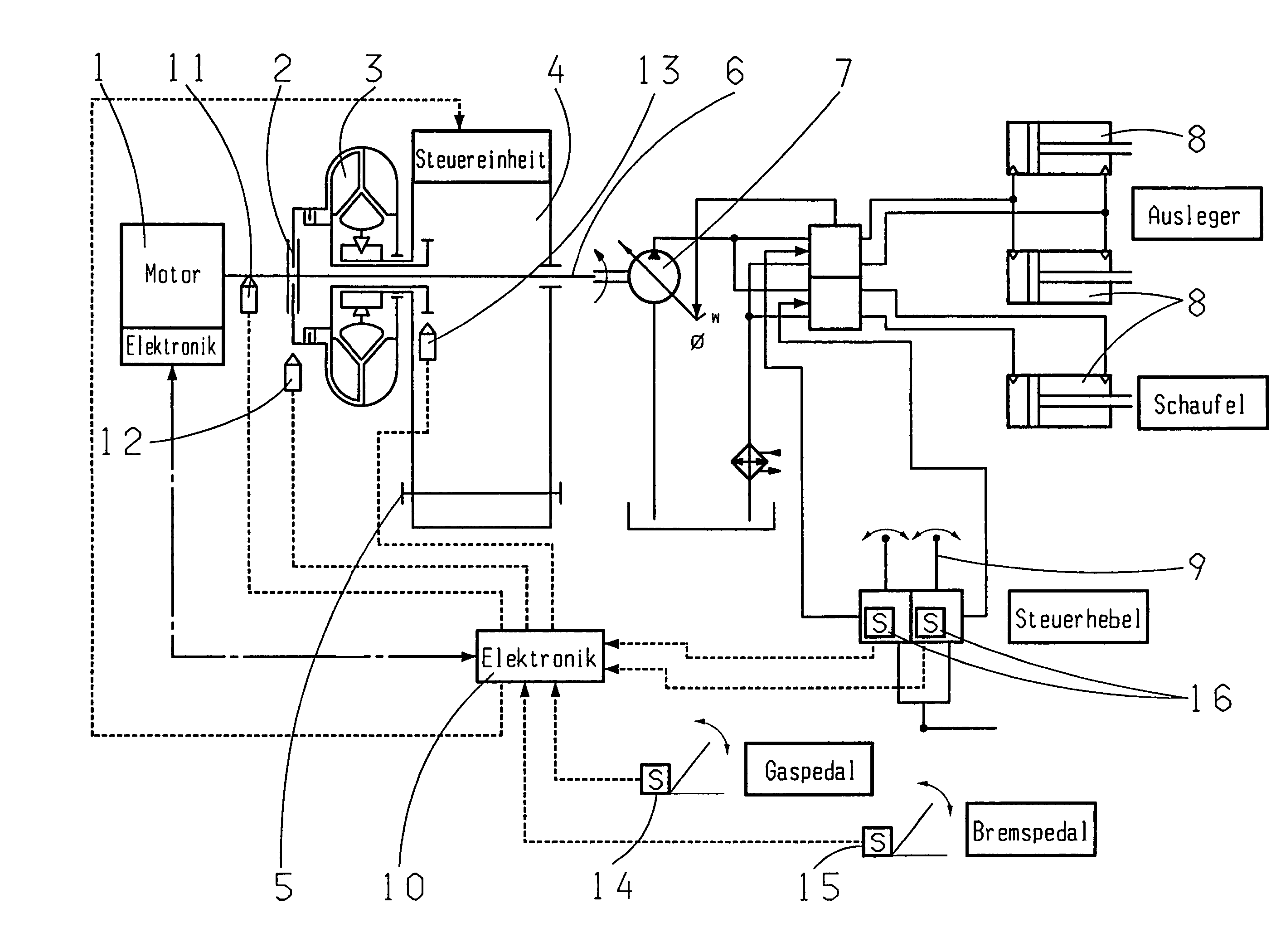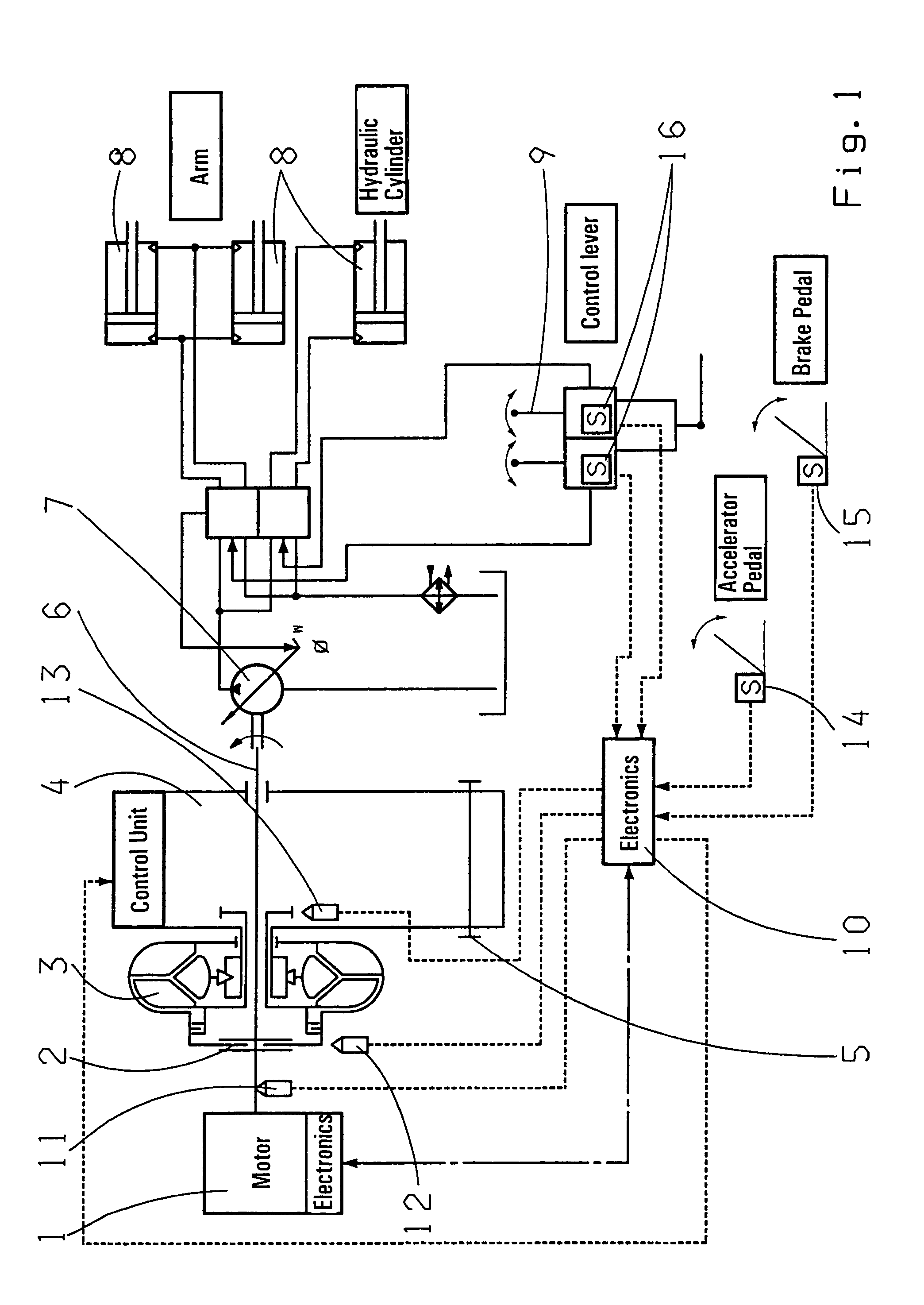Power train for a mobile vehicle
a technology for mobile vehicles and power trains, applied in fluid gearings, braking systems, gearings, etc., can solve problems such as weak traction, and achieve the effects of reducing traction, ensuring stability, and ensuring rotational speed
- Summary
- Abstract
- Description
- Claims
- Application Information
AI Technical Summary
Benefits of technology
Problems solved by technology
Method used
Image
Examples
Embodiment Construction
[0011]The single FIGURE shows a primary mover 1 designed as an internal combustion engine and connected via a primary clutch 2 with a hydrodynamic converter 3. The output of the hydrodynamic converter is connected with an engageable reduction gear 4, an output 5 of which is connected with driving wheels (not shown) of the mobile vehicle. A consumer 7 is directly connected via a power take off 6 with the prime mover 1. The consumer 7 is designed as a gear wheel pump or adjustable hydraulic axial piston pump and supplies hydraulic cylinder 8 such as the lifting cylinders of a blade of a wheel loader. The hydraulic cylinder 8 can be activated via a control lever 9. An electronic control unit 10 detects the rotational speed of the prime mover 1 from a sensor 11, the operating state of the primary clutch 2 from a sensor 12, the output rotational speed of the hydrodynamic converter 3 from a sensor 13, the position of the accelerator pedal from a sensor 14, the position of the brake pedal ...
PUM
 Login to View More
Login to View More Abstract
Description
Claims
Application Information
 Login to View More
Login to View More - R&D
- Intellectual Property
- Life Sciences
- Materials
- Tech Scout
- Unparalleled Data Quality
- Higher Quality Content
- 60% Fewer Hallucinations
Browse by: Latest US Patents, China's latest patents, Technical Efficacy Thesaurus, Application Domain, Technology Topic, Popular Technical Reports.
© 2025 PatSnap. All rights reserved.Legal|Privacy policy|Modern Slavery Act Transparency Statement|Sitemap|About US| Contact US: help@patsnap.com


